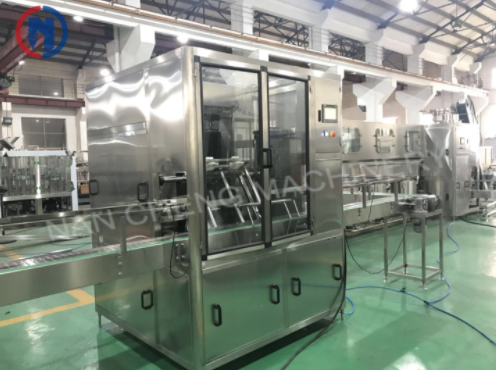Call us : +86-13601566060
+86-13921994358
Send us an Email : peter@chinancjx.com
Visit Us : 9 Tongxin Road, Leyu town, Zhangjiagang City, Jiangsu Province, China
![]() WhatsApp: +86-13921994358, +86-13601566060
WhatsApp: +86-13921994358, +86-13601566060
Whether you’re a newcomer to the world of liquid filling equipment or an experienced user looking to upgrade or change your production line, browsing websites and product catalogues in the search to source a suitable machine can be more than a little confusing.
Overflow or gravity machine? Piston or pump? Automatic, semi-automatic or manual? Hot or cold-filling? In-line or rotary filling? Off-the-shelf or turnkey? Fortunately, with so many choices out there you’re likely to find the ideal solution for your particular application – however, finding it requires that you do a bit of homework and adopt a systematic approach.
Not all liquids are the same. Some are free-flowing, others are very viscous. Some contain particulates or flammable ingredients, others are foamy whilst the viscosity of some products may change when the temperature changes. The important thing to remember is that type of liquid filling equipment that you choose has to be compatible with the product type. For example, a gravity filler is more suitable for thin products, piston fillers are a better option for thick products than overflow filling machines and bottom-up filling machines are used for foamy products.

In many instances, the type of container or bottle will dictate the type of filling technique and the more you know about the attributes of the container, the better. What material is it made from (e.g. glass, aluminium, plastic) and what are its dimensions and characteristics? This information is important because it will determine the optimum performance of the equipment and the best equipment type. For example, an automatic bottle filler which grabs a container from the side may not actually be the best option if your container is very wide and a top filler may not work if your container has an unusually-shaped cap or lid.
gravity fed fillers (a good, cost-effective option for efficient volumetric filling especially for low viscosity and foamy liquids);
piston fillers which use a highly accurate volumetric filling technique, ideal for thick or highly viscous liquids. These are divided into two types, namely check-valve piston fillers and rotary valve piston fillers;
pump fillers which are very versatile and suitable for a wide range of liquids and viscosities
in-line filling machines (a cost-effective choice for filling containers in a line) which are suitable for those operations where different container sizes are involved; and
rotary filling machines (which are often much larger and more specialized) for faster speeds and higher production rates.

As well as the issues discussed in our previous blog, it’s important to consider:
1. What temperature does the liquid need to be filled at?
2. Does the liquid contain particulates (as with relishes and pickles, for example)?
3. Does your automated liquid filling machine meet your market’s hygiene standards?
4. If your product contains alcohol, do you need ATEX rated machinery?
However, your best option is to talk directly to industry professionals, like Nancheng. They are one of China’s largest suppliers of all types of packing and filling equipment and they will work with you to identify the most cost-effective and practical solution. They know the critical factors required from all packing, filling, bagging and palletizing machinery and equipment - i.e. versatility, flexibility, reliability, accuracy and affordability - and if you’re interested in finding out how they can help you achieve your objectives, get in touch with them immediately.
By continuing to use the site you agree to our privacy policy Terms and Conditions.